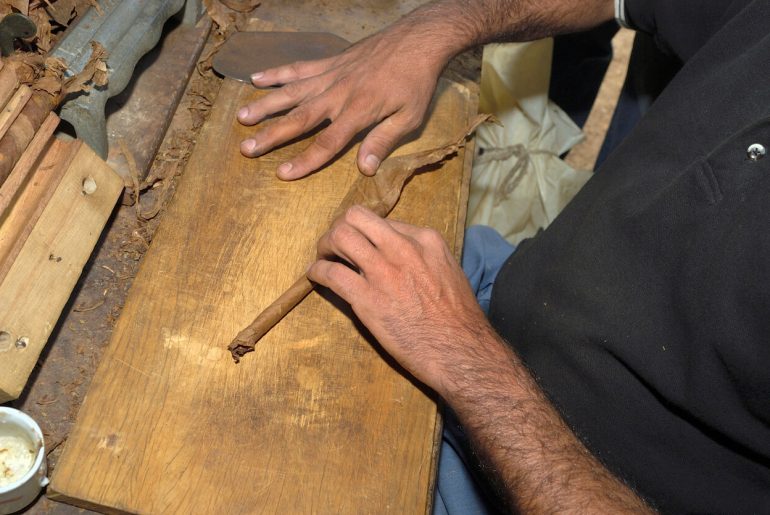If you’re used to rolling your own cigarettes, you know it can be hard sometimes… Sometimes, it becomes a bit frustrating. Your rolling paper doesn’t want to follow your intentions. The gum doesn’t stick. The cigarette falls apart. Other times, tobacco has a mind of its own. The process becomes a pain, and you give up out of frustration.
The same is true when rolling a cigar—the difference is that now it is long leaves instead of finely cut tobacco, and a lot more is at stake… Next time you light up a premium cigar, why not spare a thought for the unsung heroes behind your favorite your cigar. Also, you might wonder about the artisanry behind this exquisite creation. Premium cigars are a fusion of artistry, tradition, and passion. Come along on a journey and explore the captivating world of the torcedores—we’ll explore the art and skill behind your favorite smoke.
The Evolution of Cigar Rollers
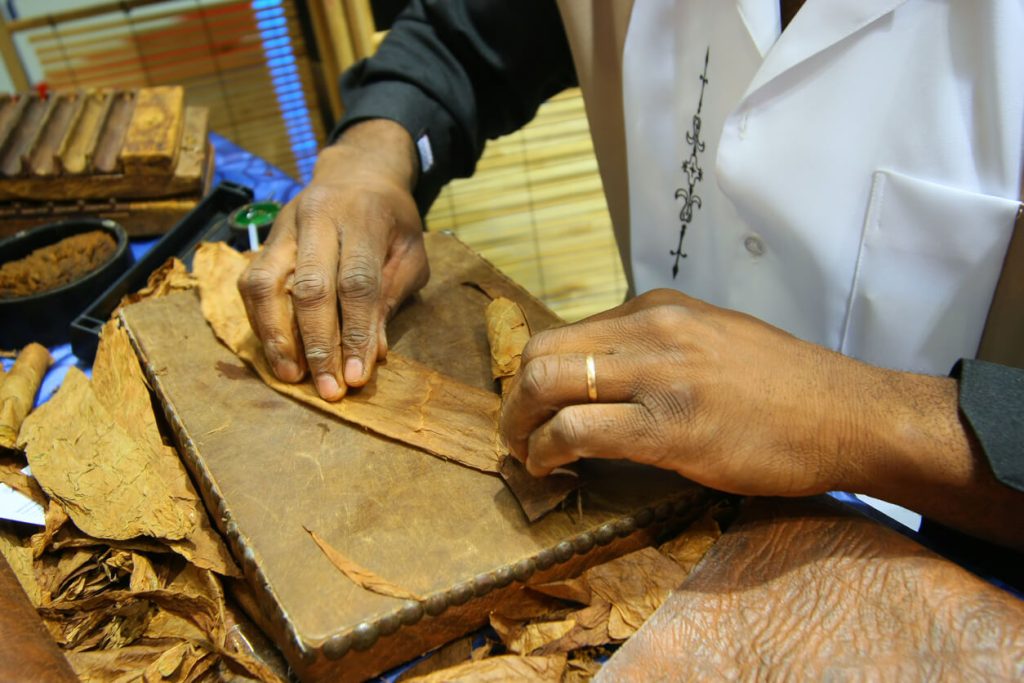
Hand-rolled cigars is a tradition that’s stood the test of time. Although the cigar industry has undergone some changes, crafting hand-rolled cigars endures. In days gone by, these skilled artisans operated in small, family-owned businesses. Nobody shared their trade secrets, and it was guarded within their close-knit communities. But times were changing. The cigar industry had grown along with the demand for premium cigars worldwide. Cigar rollers moved into larger factories to sustain the market for premium cigars.
Despite these shifts, the essence of cigar rolling has remained unchanged. Nowadays, cigar rollers work in large factories while keeping the tradition alive with an unwavering dedication to excellence. Perfection and a deep sense of pride in their artistry continue to define the world of premium cigars. These qualities shine through in every hand-rolled cigar. Each cigar captures the timeless artistry and passion each cigar aficionado wants.
The Role of the Cigar Roller
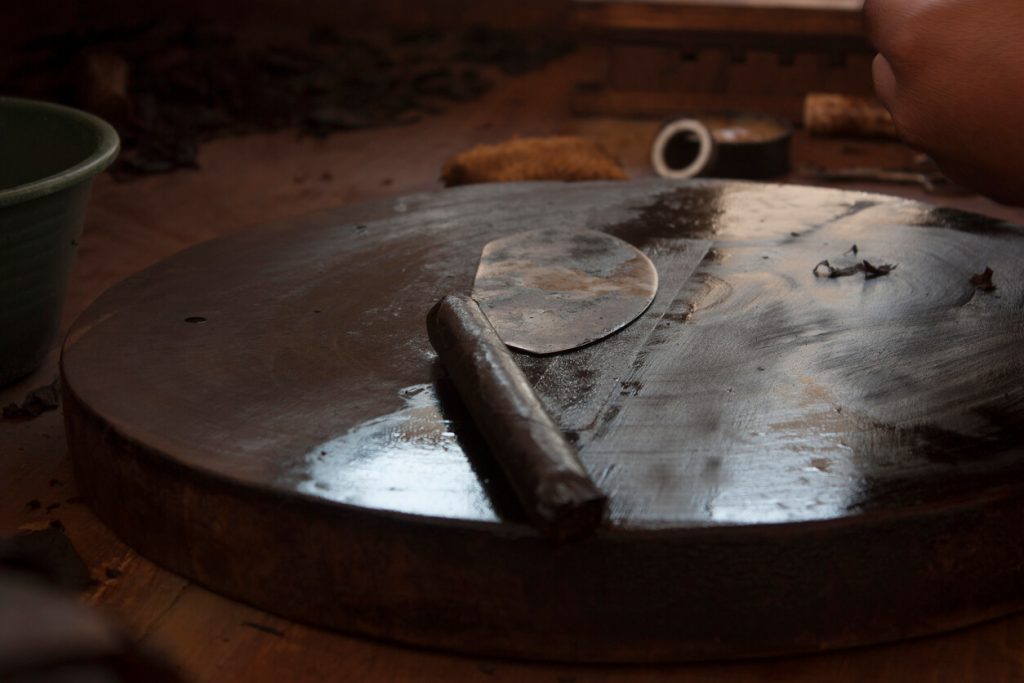
The torcedor, or the cigar roller, is at the heart of every top-notch cigar and they form the backbone of the cigar industry. What may look like a pile of leaves to us a torcedors will transform into exquisite works of art.
Cigar rolling isn’t a regular job; it’s a proper art form. The hands of a torcedor move with grace and precision as they layer and shape the tobacco leaves. Every cigar is a unique masterpiece, lovingly prepared by hand.
During the rolling process, torcedores meticulously control the tension and position of the leaves to achieve a tight and uniform roll. The cigar’s size and shape, like Robusto or Torpedo, are determined at this stage. The artistry and precision behind this process will influence the final cigar’s draw, burn, and smoking experience. With each rolled cigar, these talented torcedores expertly combine the raw materials that promises to be an epic smoking experience. And we get to share it with friends and family.
The Process of Cigar Rolling
Rolling a cigar requires an in-depth knowledge and unwavering dedication for perfection on the part of the torcedor. The first step to a good cigar is to select the finest tobacco leaves from different regions. Each leaf will play its part in the final product’s unique flavors and characteristics. The chosen leaves are sorted and arranged to create unique curated blends.
The torcedor bunches the leaves together, tightly wrapping them in a binder to form the cigar’s core. The next step is the delicate art of applying the wrapper leaf. To achieve the flawless appearance we expect from premium cigars requires precision and finesse—certainly not something I’d be able to do! The torcedor’s mastery and attention to detail shine through and ensures a masterpiece of taste and craftsmanship. Once the cigar is wrapped in its wrapper it will be trimmed and needs to pass final inspection to guarantee perfection.
Time and Patience Behind Each Cigar
Cigar rolling is far from rushed; it’s a labor of love that requires ample time and endless patience. A skilled torcedor can only produce a limited number of cigars each day. Yet, this exclusivity adds to the enchantment of hand-rolled cigars. The dedication and time invested in crafting each cigar guarantee that the final product is nothing less than extraordinary. This meticulous attention to detail and the passion behind every roll make hand-rolled cigars exceptional and cherished by enthusiasts worldwide. We’ll look at the most critical steps involved in making a hand-rolled cigar in the following sections.
Preparing the Tobacco
Before torcedores begin their exquisite craft, mater blenders must adequately prepare the tobacco. Once cured and fermented, the tobacco will rest and undergo an aging process where it’s either wrapped in burlap or stored in large boxes. The bundles of leaves are stored in temperature-controlled warehouses for up to two years. Sometimes it’s stored even longer! When the tobacco is ready, skilled hands transform the leaves into cigars. The leaves are removed from the bales and ‘cased,’ a method that adds moisture, making them supple and easy to handle. Some factories use misted water, while others use high-humidity rooms. Generally, the leaves are prepared a day in advance.
After moistening leaves, they go through deveining by machines or hand. Skilled workers gently pull the stem down the middle of the leaf. Next, the leaves are sorted based on their strength or tobacco type. A supervisor, or primary blender, carefully selects the right blend of leaves for each cigar. These chosen leaves are placed into various boxes and later taken to the rollers’ desks. The rollers receive exact instructions on how much of each leaf to use in the cigars they’ll be crafting that day. With each step, the torcedores’ expertise and care ensure the creation of exceptional hand-rolled cigars.
Constructing the Cigars
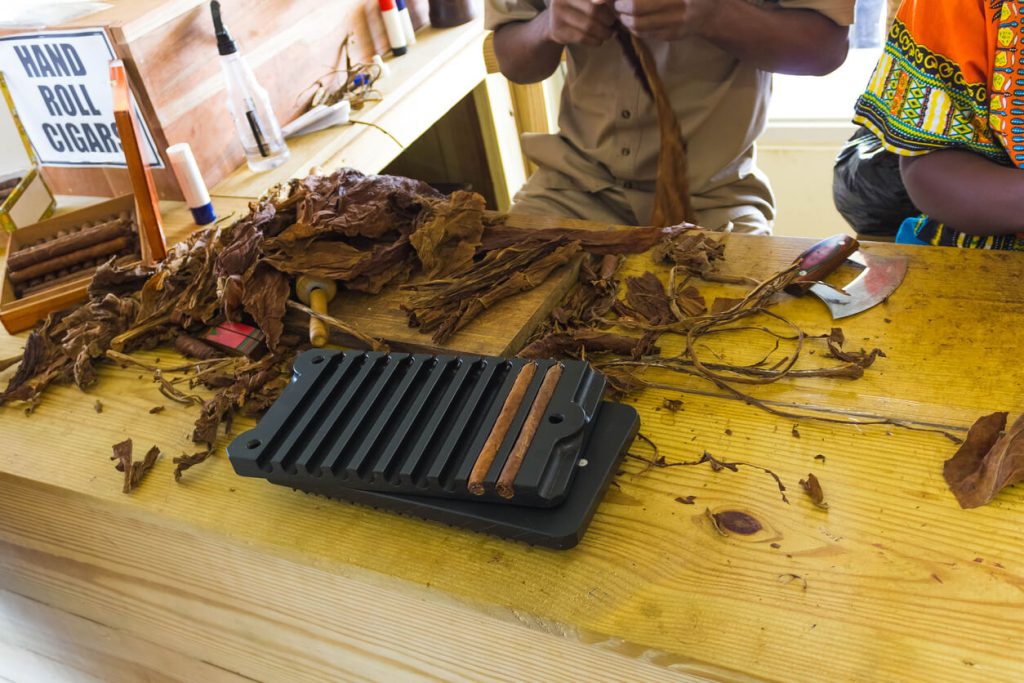
In some factories, one person handles the entire cigar-making process, crafting the cigars from start to finish. A skilled roller in this setup can produce around 100 to 150 cigars daily. But when a team approach is taken, two workers or bunchers work together to create the filler/binder unit. They collaborate with a roller who will apply the cigar’s outer wrapper. In this arrangement, a team can produce approximately 250 to 300 cigars daily or even more when made in smaller sizes.
The torcedor selects three or four different leaves and presses them together, skillfully folding them over one another to form the filler tobacco. This creates a narrow passage in the center, ensuring proper airflow for the cigar’s draw. In some factories, a Temsco machine is used to aid this process. The Temsco machine, also known as a Lierberman, consists of a leather pad, metal handle, and guides to assist the roller in assembling the bunch. While it is widely used in cigar factories in the Dominican Republic, it is rarely used in Central America and never used in Cuba.
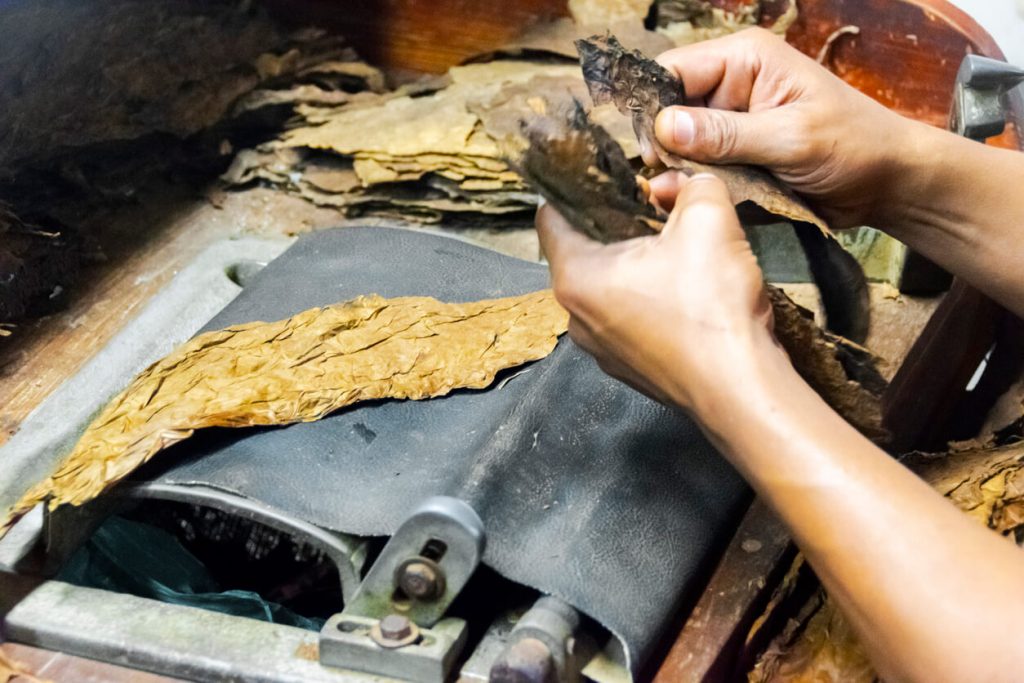
Next, they apply the binder using the Temsco machine or by carefully rolling it around the filler leaves by hand. To achieve the desired shape and size of the cigar, they place the entire package in a wooden mold with slots that match the final dimensions of the cigar. Once the mold is filled, they set the top half over it and take it to a manual hydraulic press.
They press the bunches for about 30 to 45 minutes. The mold is periodically turned by a quarter turn to prevent ridges from forming where the two halves meet. Some factories also use a particular machine to draw air through the cigars, check their draw, and ensure a smooth smoking experience. Throughout these intricate steps, the cigar makers’ artisanry and attention to detail shine through.
Applying the Wrapper
Once the mold is removed from the press, it’s handed over to the roller, who wraps the outer wrapper leaf around the filler tobacco leaves. Men are often responsible for working on the filler and binder, while women apply the wrapper. The cigar makers constantly use fine-tuned fingers to inspect the bunch for imperfections, ensuring the leaves are uniform. Any defective cigars they find are at once rejected.
As the cigar nears completion, they add a cap to the head, which is the smoking end of the cigar. This cap is usually a piece of tobacco sliced from the leaf before rolling. Sometimes, the roller might create a cap from the protruding end of the wrapper leaf, known as the flap or flag.
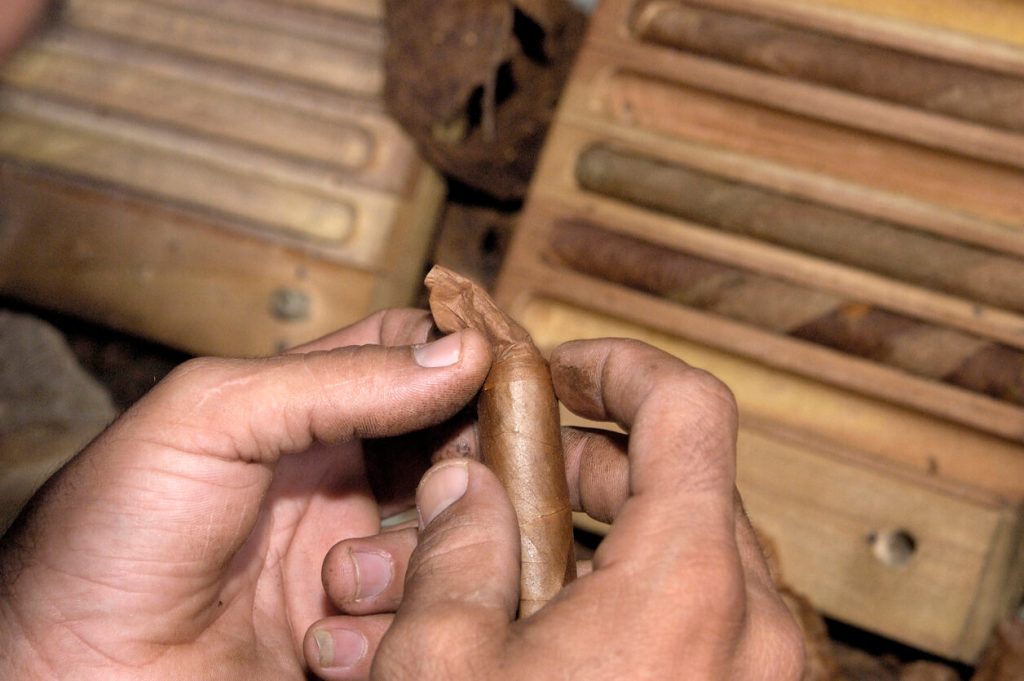
Once the cigar is finished, the cigar maker places it on their rolling desk. The supervisor meticulously inspects each cigar by hand, rejecting any cigars showing improper rolling or filling. In some factories, they weigh together bunches of 50 cigars. If there’s a variation in weight by a couple of grams, they send all the cigars back to the roller for reworking. Quality is paramount, and only the finest cigars meet the highest standards for distribution.
As you can see, attention to detail at every step is crucial to craft a premium cigar. A cigar passes various quality checks at the attentive hands of skilled artisans to ensure the utmost quality possible.
The Importance of Experience and Training
To become a skilled torcedor you need years of training and dedication to your art. Many torcedores come from a proud line of cigar artisans and pass their knowledge from one generation to the next. This tradition of passing the flame of knowledge keeps the art of cigar rolling alive and thriving. For them, it’s a passion. Their ability goes into crafting the exceptional hand-rolled cigars beloved by enthusiasts worldwide.
The Impact of Cigar Rollers on Cigar Quality
Without talented torcedors, we won’t have quality cigars to smoke. Their talent and commitment are vital in the quality of the cigars they create. Their expert hands (and eyes) ensure they roll each cigar to absolute perfection, leading to a seamless draw and a consistent burn. You can never go wrong with a meticulously crafted cigar because you know that the artists’ aim is to deliver an unparalleled smoking experience.
Preserving Tradition in the Modern World
In today’s fast-paced world, the art of hand-rolled cigars is a testament to the enduring value of tradition and artisanry. Machine-made cigars might be cheaper and easier to produce. Yet, true aficionados will always prefer a hand-rolled cigar for the unparalleled quality and distinctive character. The passion and dedication of cigar rollers play a pivotal role in keeping this treasured tradition alive.
As the cigar industry evolves, there is growing concern about preserving the art of cigar rolling for future generations. Unfortunately, fewer young torcedores enter the profession. Manufacturers are making concerted efforts to ensure this cherished craft’s continuation. Some cigar manufacturers are starting training programs to train aspiring newcomers while preserving the wisdom and ability of seasoned torcedores.
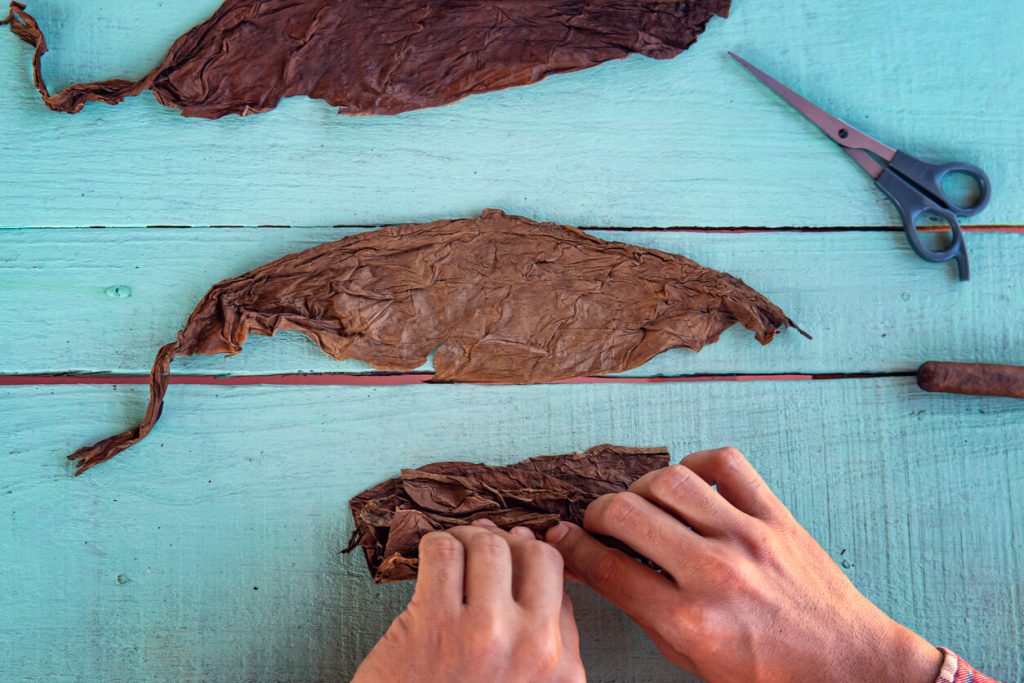
Training programs are important and go beyond teaching the technical aspects of cigar rolling. During training a beginner torcedor can learn from a master about artisanry, dedication, and meticulousness. By striving for perfection, young torcedors become torchbearers of the art of hand-rolled cigars, ensuring aficionados will have cigars to enjoy.
Supporting Hand-Rolled Cigars—A Tribute to Torcedores
Choosing hand-rolled cigars ensures a premium smoking experience. Apart from having the best experience you’re also supporting the skilled artisans who pour their heart and soul into their craft. We as cigar enthusiasts play a vital role in supporting the cigar industry’s artisans. In turn, torcedors can earn a living while preserving this treasured tradition.
When you indulge in a hand-rolled cigar, you become a part of a centuries-old legacy of cigar rolling. It’s more than smoking a cigar; it’s savoring the labor of love and unwavering dedication that torcedores invest in their craft. Each puff pays tribute to the artistry and passion that brings a simple tobacco leaf to life.
The Habano Festival in Havana, Cuba, is the world’s most famous event dedicated to premium cigars and torcedores. It attracts over 1,300 participants from around 70 countries for a 5-day program of activities. Conferences, visits to tobacco plantations and factories, exclusive pairings, and product launches by Habanos, S.A. are offered. The Gala Dinner takes place on the final day and is the event’s highlight. It features Cuban music and a charity auction of Habanos humidors for public health. The festival also includes a trade fair with around 80 exhibiting companies. Over 200 journalists from worldwide media cover the event.
Conclusion
The world of cigar rollers is an exciting fusion of tradition, artistry, and passion. Torcedors don’t create cigars; they craft experiences and infuse each smoke with their dedication and ability. Hand-rolled cigars are a powerful reminder of the enduring allure of true artisanry in our fast-paced world. So, the next time you light up your favorite hand-rolled cigar, take a moment to appreciate the art and skill behind the smoke. Happy (thoughtful) smoking!

